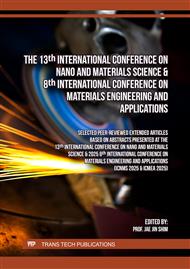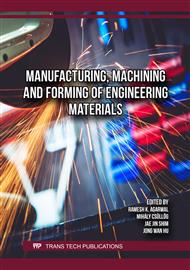p.67
p.75
p.81
p.93
p.103
p.111
p.117
p.123
p.129
Microstructure and Engineering Properties of New and Aged Bamboo as a Construction Material: The Effects of Borax/Boric Solution Treatment
Abstract:
This study examines the effects of borax/boric treatment on the microstructure and engineering properties of Dendrocalamus asper bamboo, evaluating its suitability as a sustainable construction material. Four types of bamboo—new and aged samples, treated and untreated—were assessed for moisture content, dry density, compressive, and shear strength. Microstructural analysis showed that borax/boric treatment helps preserve cellular structure and stability, especially in new bamboo. Mechanical testing revealed higher compressive strength in treated new bamboo (497.9 ksc) compared to untreated bamboo, and greater integrity in aged treated bamboo over a 10-year period. Untreated bamboo exhibited deterioration, including cracks and insect damage, absent in treated samples. These findings demonstrate that borax/boric treatment improves bamboo’s initial strength and long-term durability, supporting its use in structural applications and promoting sustainable construction with bio-based materials.
Info:
Periodical:
Pages:
111-116
Citation:
Online since:
June 2025
Price:
Сopyright:
© 2025 Trans Tech Publications Ltd. All Rights Reserved
Share:
Citation:



